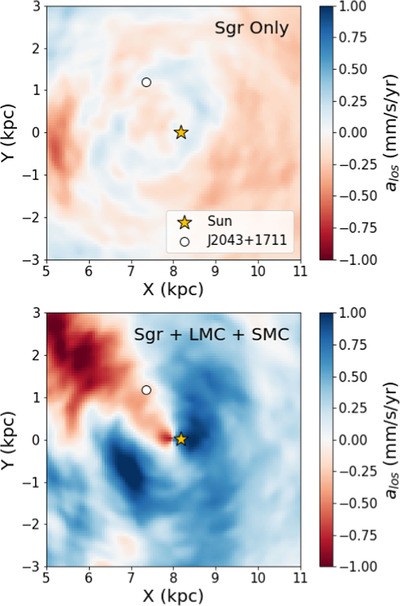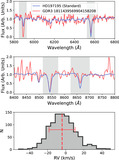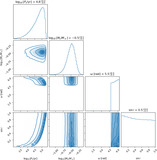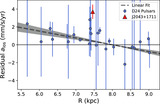Image Details

Caption: Figure 1.
Simulated line-of-sight accelerations that are imparted on the Galactic disk due to interactions with satellite galaxies (S. Chakrabarti et al. 2019). These accelerations are for objects located in the Galactic plane, i.e., at Z = 0. The top panel shows a simulation that only included the effects of the Sgr Dwarf Galaxy, whereas the bottom panel shows the effects of Sgr as well as the Magellanic Clouds. Positive (blue) regions are accelerating away from the Sun, and negative (red) regions are accelerating toward the Sun. These acceleration residuals were obtained by subtracting the accelerations of the initial conditions of the simulation from the accelerations at present day; this is necessary because the potential of the smooth, unperturbed disk dominates the observed accelerations, and is unrelated to satellite interactions. The typical amplitude of peculiar accelerations due to this particular disequilibrium feature are on the scale of 0.5–1 mm s–1 yr–1, which is not large enough to explain the observed peculiar acceleration for J2043+1711.
Copyright and Terms & Conditions
© 2025. The Author(s). Published by the American Astronomical Society.








